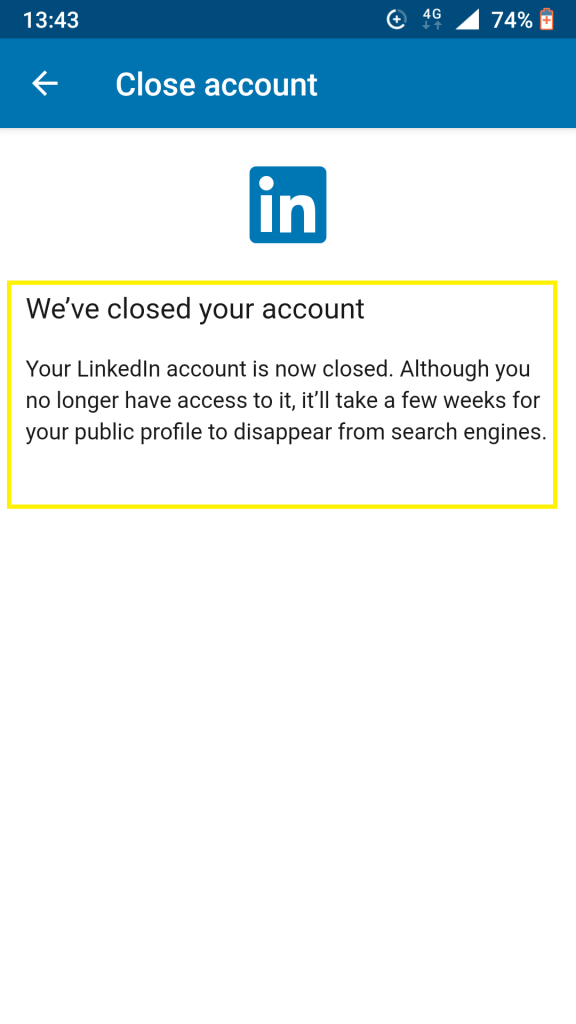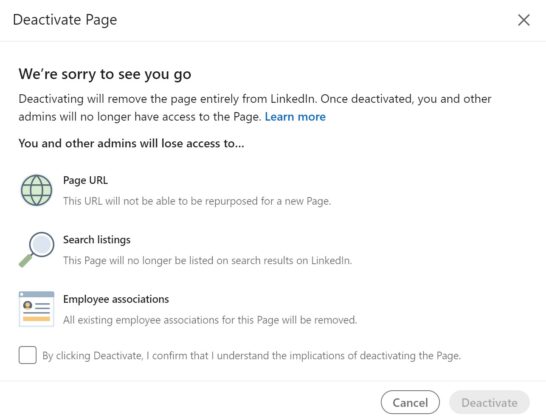Thinking of stepping back from LinkedIn? Whether it's due to privacy concerns, a need for a digital detox, or simply a change in career focus, uninstalling LinkedIn and deleting or deactivating your account can be freeing. In this post, we’ll walk you through the reasons you might want to make this move and how to do it step-by-step. Let’s dive in!
Reasons to Uninstall LinkedIn

There are many reasons why someone might consider uninstalling LinkedIn. Here are some common motivations:
- Privacy Concerns: Many users worry about how LinkedIn handles their personal information. With rising concerns about data security, some prefer to minimize their digital footprint.
- Too Much Noise: The constant stream of updates, job ads, and connection requests can feel overwhelming. If you find yourself scrolling mindlessly, it might be time for a break.
- Shifting Career Focus: If you're stepping away from job searching or changing industries, you may not need LinkedIn as a career tool anymore.
- Productivity Boost: Social media can be a distraction. Uninstalling LinkedIn can help you reclaim your time for more productive endeavors.
- Limited Engagement: If you’re not using the platform to its fullest potential—like networking or sharing professional content—it may not be worth having it installed.
Additionally, some users feel that the platform doesn’t align with their personal brand or professional goals. If you find yourself feeling stressed or anxious about maintaining your LinkedIn profile, it’s completely valid to consider other avenues for networking and career development.
Ultimately, it’s about what feels right for you. Remember, taking a break doesn’t have to be permanent—if you decide to return, your connections and profile can often be quickly reinstated. But for now, let’s explore how to uninstall LinkedIn and manage your account settings effectively.
Also Read This: How to Add a Website Link to Your LinkedIn Profile
3. How to Deactivate Your LinkedIn Account

Deactivating your LinkedIn account is a straightforward process, perfect for those who want a break without completely saying goodbye. Here’s how you can do it:
- Log In to Your Account: Start by visiting LinkedIn and logging in with your credentials.
- Access Your Settings: Click on your profile picture at the top right corner. From the dropdown menu, select Settings & Privacy.
- Navigate to Account Preferences: In the settings menu, locate the Account preferences tab on the left sidebar.
- Find Deactivation Option: Scroll down until you see the Account management section and click on Close account.
- Follow the Prompts: LinkedIn will ask you a few questions about why you’re deactivating. Answer them as you prefer, then click Next.
- Confirm Deactivation: Finally, you’ll need to click Close account to confirm your decision. Voila! Your account is now deactivated.
When you deactivate your account, people can no longer see your profile or any activity you had on LinkedIn. However, it’s worth noting that LinkedIn retains your information in case you decide to reactivate. If you’re just looking for a break, this is a great way to step back!
Also Read This: How to Create a Post Like a LinkedIn Influencer for Maximum Impact
4. Steps to Permanently Delete Your LinkedIn Account
If you’ve made up your mind to completely delete your LinkedIn account, the process is slightly different and more permanent. Here’s how to do it:
- Log In to Your Account: Just like deactivation, start by logging in to your LinkedIn account.
- Access Your Settings: Click on your profile picture and navigate to Settings & Privacy.
- Go to Account Preferences: In the left sidebar, click on the Account preferences section.
- Find the Account Deletion Option: Look for the Close account option within the Account management area.
- Select Delete Account: Choose Continue to delete account. LinkedIn will present you with some warnings and information about what happens when you delete your account.
- Provide a Reason: You might be prompted to share why you’re deleting your account. This feedback can help LinkedIn improve its platform, but you can skip it if you prefer.
- Confirm Deletion: Lastly, click on Next and follow the prompts to confirm the deletion of your account. Once you do this, your account will be permanently deleted.
Keep in mind, deleting your LinkedIn account means losing all your connections, messages, endorsements, and recommendations. Once it’s done, there’s no turning back! If you’re sure this is what you want, then go for it. Otherwise, deactivation might just be the perfect option to take a breather.
Also Read This: How to Change Your LinkedIn Email Address
5. What Happens After Deleting Your Account
So, you’ve decided to take the plunge and delete your LinkedIn account. But what happens next? It’s essential to understand the implications of this decision.
First and foremost, once your account is deleted, you won't be able to recover it. All your connections, messages, endorsements, and profile details will be gone forever. If you think you might want to return to LinkedIn in the future, consider deactivating your account instead of deleting it. Deactivation allows you to take a break while keeping your information intact.
Here’s a quick rundown of what you can expect after deletion:
- Your Profile is Gone: Your profile will no longer be visible to other users. It’s like you were never there!
- Loss of Connections: All of your connections will be removed, and you’ll lose access to any recommendations or endorsements you received.
- Data Retention: LinkedIn may retain some of your data for legal purposes, but it won’t be accessible to you or anyone else.
- No Notifications: You will stop receiving email notifications or updates from LinkedIn.
It’s important to remember that the impact of deleting your account may reach beyond just LinkedIn. If you used your LinkedIn profile to apply for jobs or connect with professionals, you might need to rethink your networking strategy. Being offline can sometimes limit your visibility in your industry.
If you’re worried about losing your professional connections, consider downloading your LinkedIn data before deleting your account. This way, you’ll have a record of your network, connections, and endorsements, which may be beneficial for future endeavors.
6. Alternatives to LinkedIn for Networking
If you're stepping away from LinkedIn, you might be wondering where to turn for professional networking. Fortunately, there are several excellent alternatives that can help you connect with others in your field.
Here are some popular options:
- Meetup: A fantastic platform for finding and joining local events related to your industry. Whether it’s workshops, seminars, or informal meetups, you can network face-to-face.
- Xing: Particularly popular in Europe, Xing is a professional networking site similar to LinkedIn but with a more localized approach. Great for finding jobs and connecting with industry professionals in specific regions.
- Facebook Groups: Believe it or not, Facebook has many groups dedicated to various professions and industries. Joining relevant groups can help you network and share ideas with like-minded individuals.
- Twitter: Use Twitter to follow industry leaders, participate in discussions, and share your expertise. The platform is excellent for building your personal brand and connecting with others.
- Alignable: This platform focuses on small businesses and local networking. It’s a great way to connect with other entrepreneurs, share advice, and collaborate on projects.
Each of these platforms has its unique features, so explore a few to see which ones feel right for you. Remember, networking is about building relationships, and there are plenty of ways to do that beyond LinkedIn. Embrace new opportunities and connect with others who share your interests and goals!
 admin
admin








